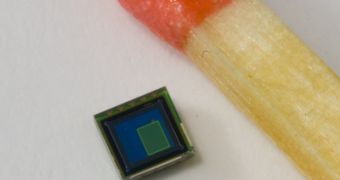A team of researchers from the USC Viterbi School of Engineering, including Professor Hossein Hashemi and Graduate student Ta-Shun Chu, has recently been capable to create a small 49 pixel CMOS camera, that works in the ultrawideband radar. Only two years ago, the team presented a similar CMOS chip that was only capable of producing a single radar beam, which gave it one-dimensional detection.
By staking a 7x7 array of such chip, a 49 pixel camera operating in the radio band was obtained, able to produce two-dimensional images. The invention has been presented today at the IEEE International Solid State Circuits Symposium that takes place in San Francisco. The chip matrix functions as an active array that sends out 49 beams of light in the radio spectrum, bounces them on any reflecting solid surface, and picks up the retrieved wavelengths.
Professor Hashemi stated that the novel architecture, developed during the collaboration with Chu, could be integrated into two-dimensional arrays in relative small areas of standard CMOS chips. What draw Hashemi towards the CMOS technology was basically the fact that CMOS chip building technology is much cheaper than alternative chip manufacturing processes, reducing the production costs of the radar camera and enhancing its functionality at the same time.
The radar camera can be operated in different radar and imaging systems, and is able to detect and identify multiple objects in a complex environment. They may be used in future search and rescue missions, to create image through solid walls in order to find victims of potential accidents or even earthquakes. Its radar imaging capabilities could also be used in biomedical imaging, or for building real-time collision sensors, as a safety feature for drivers and future autopilot vehicle navigation systems.
CMOS, or complementary-symmetry metal-oxide-semiconductors technology, is used today in most of the digital circuits of electronic devices. They generate much less heat than TTL, or transistor-transistor logical circuits, and can provide a much higher density of logical functions, have lower consumption and are easy to manufacture and cheap. They are also used routinely to create optical sensors for digital cameras.

 14 DAY TRIAL //
14 DAY TRIAL //